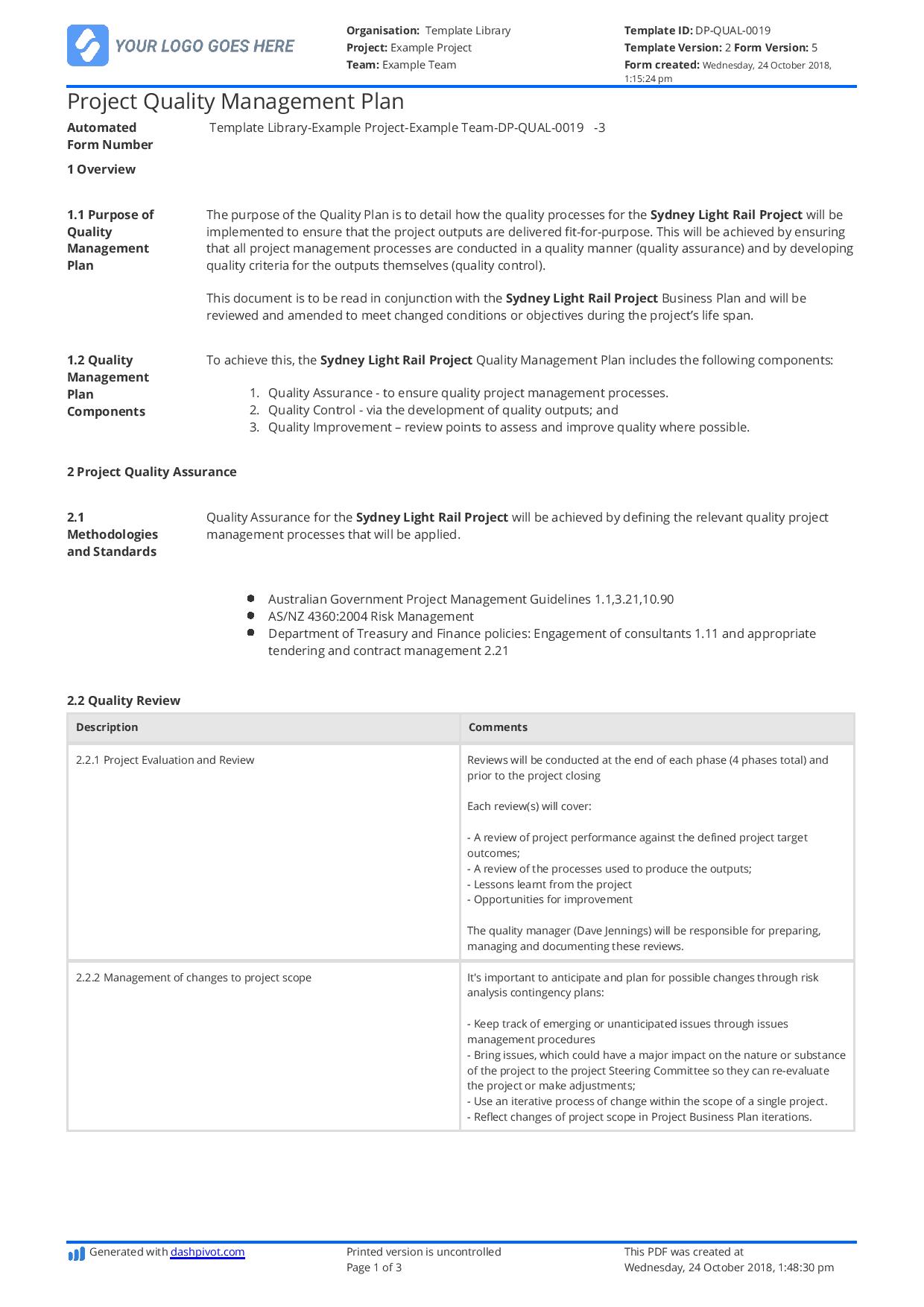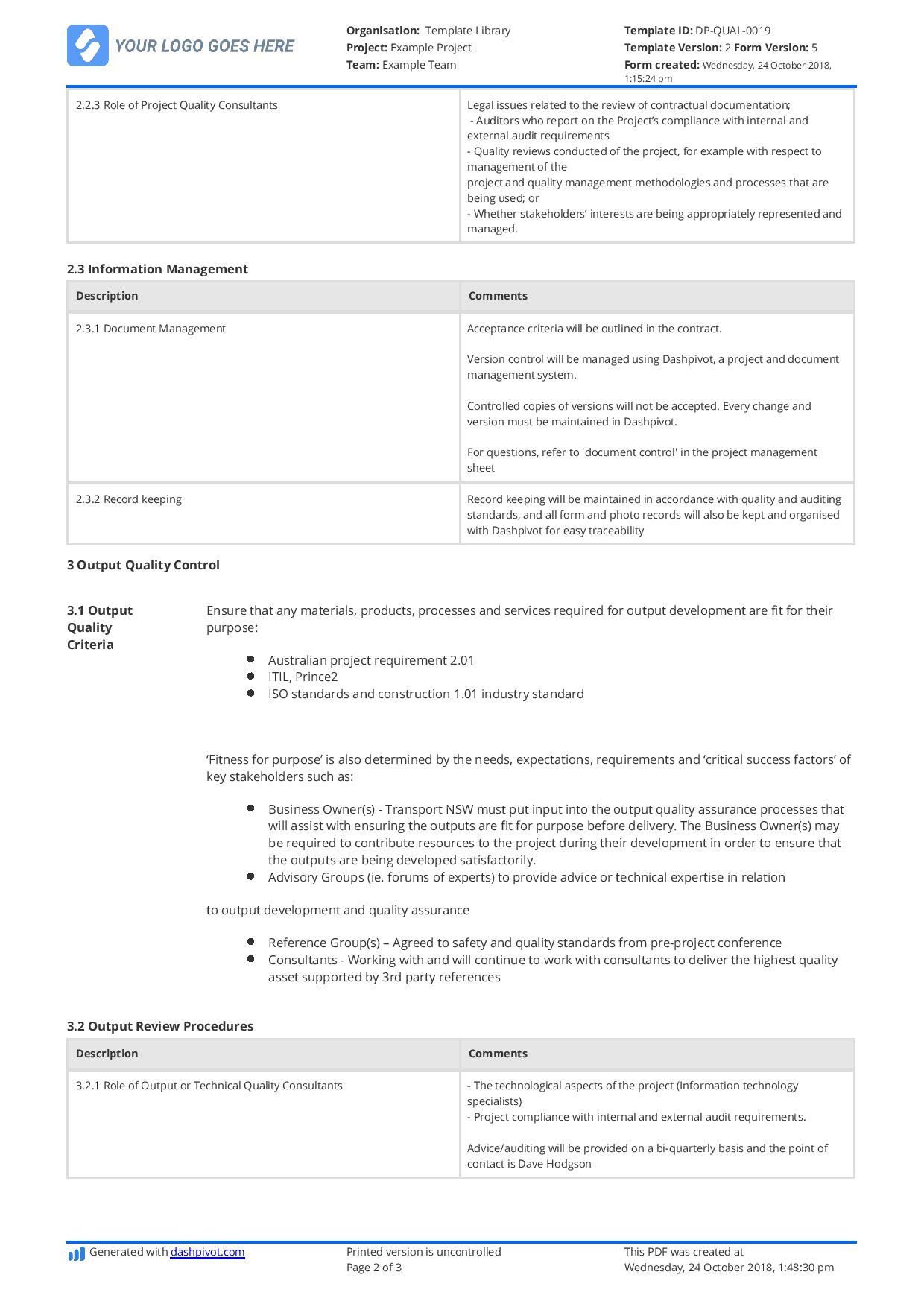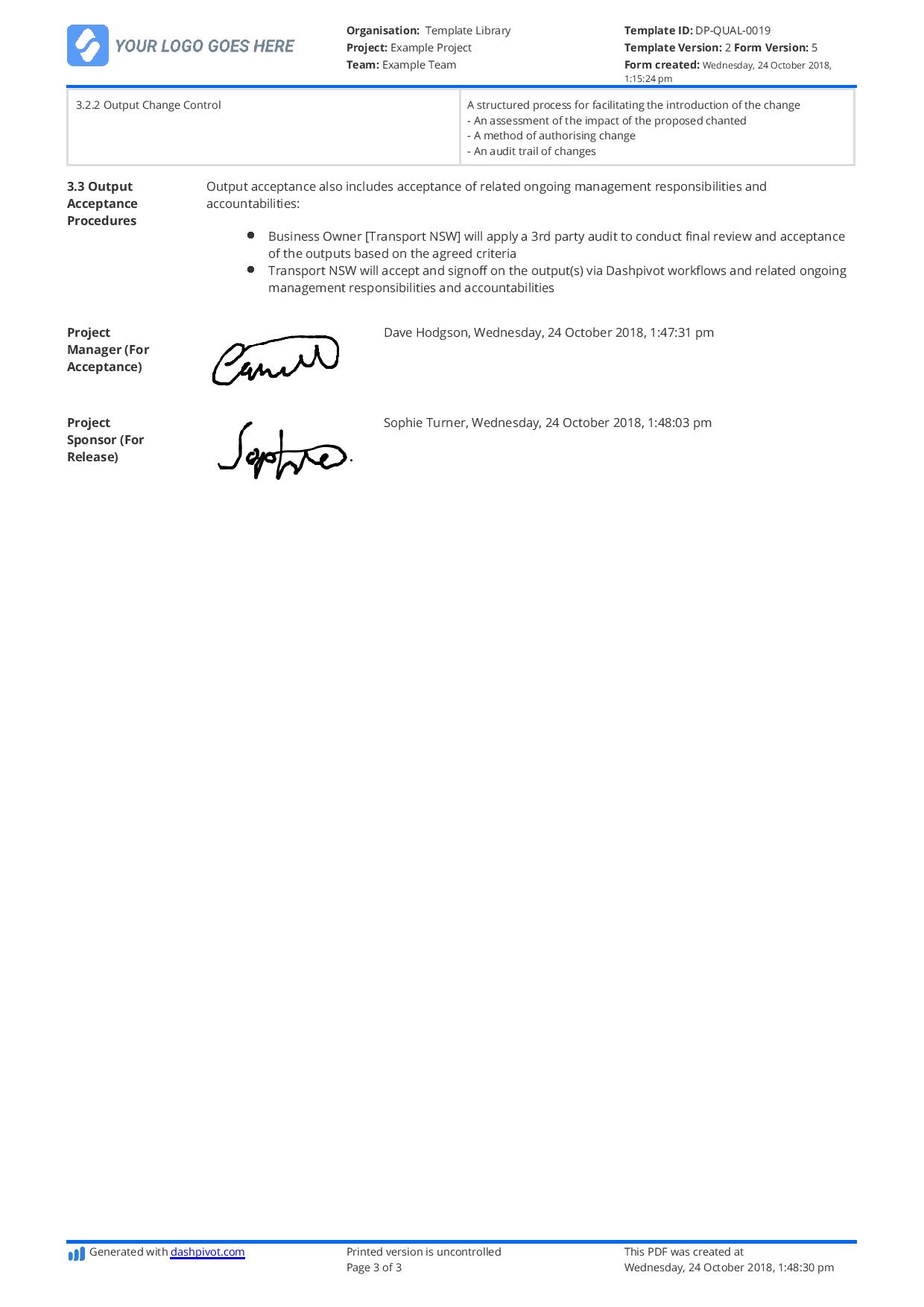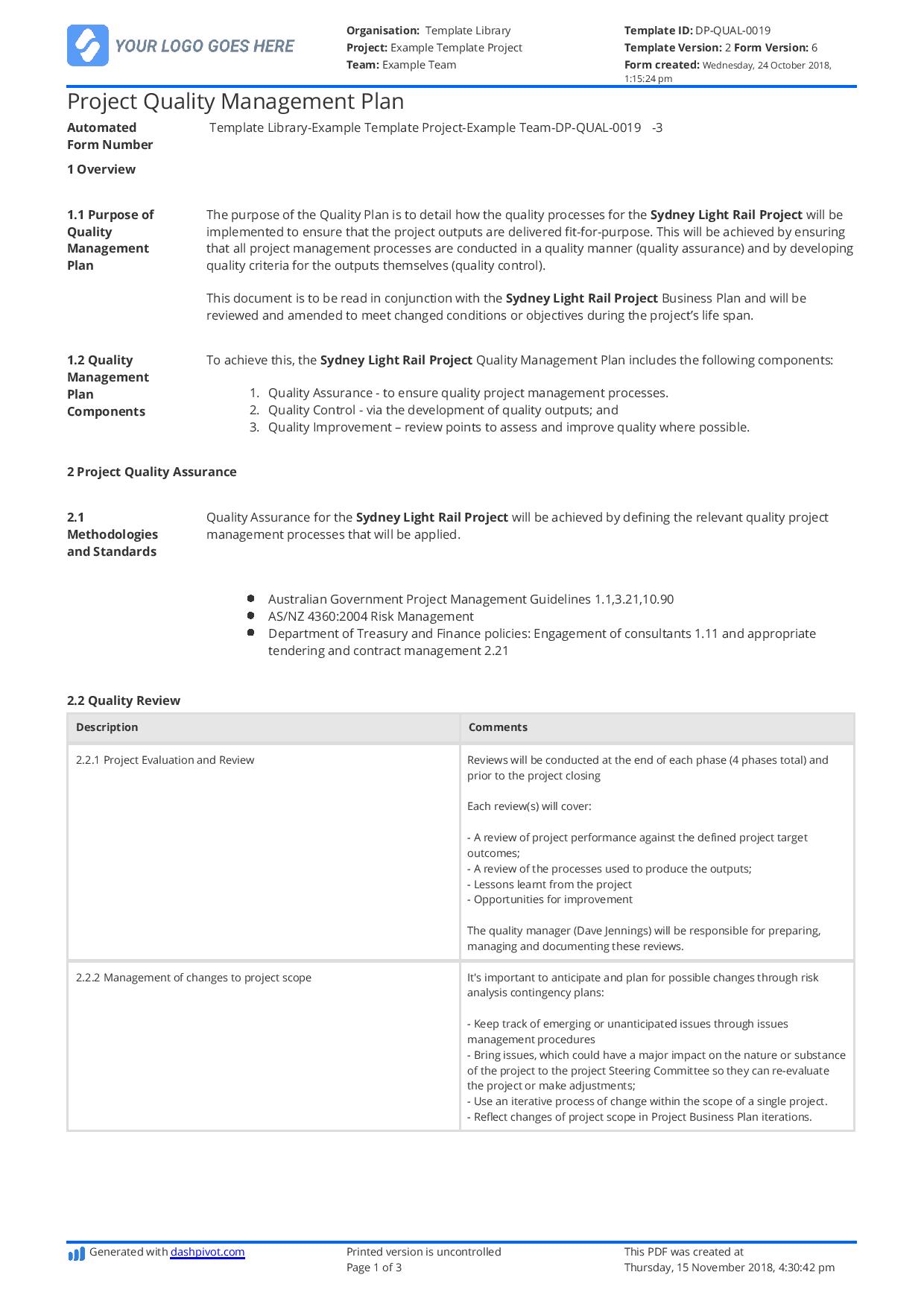Quality – Quality policy statement examples
Quality policy statement examples
In this article, we cover a number of quality policy statement examples that you can use as frameworks for your own policies, as well as some more actionable quality management tips and templates you can use to start driving better quality management at your company now.

What is a quality policy statement?
Quality is a broad term and concept which is central to all companies and anyone who delivers a product or service. For most of time, quality has been an expectation for anyone trading goods, services and money. If I pay for 'X', then I want to know and be assured that that product or service will fulfil the duty I expected it to and perform properly.
Quality is the backbone of every business, because quality is what creates reputation, word of mouth and repeat business. Without quality, it is extremely hard to build a successful company.
Because of it's importance, there is a high level of focus, procedure and documentation around quality management in all companies.
Many of these procedures and documents are internally focused (quality policies etc.), some are external focused (quality assurances etc.) while some serve both.
A quality policy statement is one of the tools which companies create and use both internally and externally.
A quality policy statement is a short document published by the quality team or management of an organisation to establish what quality means to that organisation.
Quality policy statements are always used internally as a means of establishing a quality baseline for all employees to adhere to, while they are commonly made public and available to investors, customers, suppliers and regulators as a means of quality assurance and PR.
A quality policy statement is often the quality 'mission' or principles of the organisation, and brings multiple quality standards and policies in one well presented and digestible document.
What can (or should) be included in a quality policy statement?
The quality statement examples we will dive into below will be applicable to you in that the content, length and format of the quality statement will be helpful to you, but one of the major factors in what your quality statement includes is the type of product or service you provide.
As was previously mentioned, all companies must focus on delivery quality, but what that quality is and looks like can vary quite dramatically from industry to industry.
Some of the most common quality policy statement examples you will see stem from these quality statement 'buckets':
- Customer needs: The end goal of all companies is to meet the needs of potential, current and future customers. A quality policy statement focused on customer needs is most often 'marketing' focused, and draws attention to the fact that the company is laser focused on the customer, and on delivering exactly what the customer wants.
- Customer preference: Flexibility and customisation have become more desirable to customers who seek products which align exactly with their personal preferences and desires. Many companies issue quality statements based around being able to cater to and offer exactly what a customer 'prefers'.
- Service and experience: For most service-based business (which there are a lot of), the most important quality aspect is that the service and experience meets expectations. The level of service and experience 'quality' expected obviously depends on the price of the service amongst other things, but the minimum level of quality for most customers is that they are listened to and treated respectfully in a clean environment.
- Compliance: For some companies operating in highly regulated spaces like food and drugs, the proxy for quality in their industries and amongst the public is that they achieve compliance.
- Health and safety: Health and safety matters in all industries, but some companies operate in industries where a significant part of their operational focus in terms of 'quality' is around health and safety and delivering a safe product - which is often the minimum requirements for any 'product'.
- Defects: Defect management is one of the core 'jobs' of quality management. No person or business buying from someone else is looking for a defective product, so most companies include a commitment to work towards zero defects, especially manufacturing and infrastructure style companies.
- Accuracy: One of the most important parts of 'quality' for any company is that people and companies buying the product need to be able to trust its quality. Many companies include partial statements about product and service accuracy so that people 'know' they can trust what is being said.
- Testing: testing is a huge part of quality. No company or process can be completely bulletproof, but the right testing framework and policies can prevent defective products and issue getting to the customer. Companies often have detailed plans and documents around their testing procedures, but a quality policy statement can also include sections about this given it's importance to overall quality.
- Waste: One of the by-products of producing a good or service is waste. Waste management is an integral part of environmental and quality management, and continues to grow in importance too.
- Improvement: Many products and services aren't perfect, but a commitment to continuous improvement is always a welcome addition to any quality policy statement.
- Industry specific quality: Different industries need to deliver on different promises, and so their quality statements often include industry specific information and value propositions which are designed to cater to their specific audience.
- People: All business involve a number of direct and indirect stakeholders. A commitment to thinking about and considering other people and communities often goes a long way.
- Privacy: Privacy has always been important, but it has become a much deeper focus of quality for many modern technology and data driven companies. One of the most powerful quality assurances companies like Google and Facebook can include in their quality statements is around protecting and enforcing privacy at all costs, as data is their 'product'.
- Environmental: Companies often have different documentation for environmental statements and procedures, but a commitment to quality in terms of environmental practices can also be really powerful in specific industries.
- Sourcing: For many big companies, one of their most powerful tools is their dollar, and the vendors and suppliers they choose to buy from. Not many products or services are made and produced by one company, so promising to select and use quality vendors is a direct commitment to output quality too.
As you have probably gathered, many organisations focus on delivering quality across all of these categories, and many include aspects of each in their quality policy statements. But there are often a few major categories which companies focus most of their quality policy statements as well as their energy around.
The best quality policy statement examples
The best quality policy statement is one which is specifically crafted for your product or service, and with your target customer or user in mind.
In saying this, there are of course some great examples of quality policy statements from some of the best 'quality' companies in industries in the world which are very useful for designing and maintaining your own.
Some of the companies which immediately come to mind when we think of quality and quality policies have great quality policy statements, while some lesser known companies have the 'best' quality statements in that their market is smaller and so well defined that they can be very specific and nuanced about what quality means to them and their customers.
When looking for the best quality policy statement examples for you, once again, it is most useful to find companies and industries similar to yours.
Quality is often defined as the standard of something as measured against other things of a similar kind, so keeping this in mind when thinking about and assembling quality documents is a great way to build the best possible quality statement.
With all of this in mind, you can find some of the more 'famous' and useful quality policy statement examples below.
Quality policy statement of Toyota
Toyota is one of the most famous companies when it comes to operational excellence and 'quality', so it's quality policy statements is often used as one of the best examples.
One of the most powerful features of Toyota's quality policy statement is in it's brevity. Their quality statement is short and to the point, and covers those areas which it sees as being the core pillars of quality.
The quality policy statement of Toyota reads like this:
We will continuously strive to delight our customers with outstanding Quality of our products and services.
In our endeavour to achieve this objective, we will;
- Create and nurture people of quality by continuous education and training.
- Maintain & improve standards of manufacturing.
- Establish a “Total Quality” framework to continually improve the quality Management System and realise challenging Quality objectives.
- Record and control the change points at each stage.
- Prevent defect outflow to next process, and feedback to previous process for enhanced Quality Assurance.
- Strengthen supply chain by effective traceability system.
We believe that our future lies in the hands of our valued customers.
As you can see, the quality policy statement example of Toyota includes notes for industry specific quality (manufacturing), as well as notes on testing, defects and sourcing.
All of this quality policy statement is very relevant to Toyota operations, and is useful and coherent for any reader (investor, customer, supplier etc.)
Quality policy statement example: Apple
One of the more modern companies people think of when it comes to quality is Apple. Apple is renowned for producing quality products from a usability and aesthetic standpoint, all the way from the iPhone to basic product packaging.
This slideshow covers Apple's quality policy/policies well. It summarises Apple's 8 management principles which are closely tied to quality:
- Customer focus
- Leadership
- Involvement of people
- Process approach
- System approach to management
- Continual improvement
- Factual approach to decision making
- Mutually beneficial supplier relationships
You can probably notice from the above how closely management and business principles are tied to quality. Almost all of Apple's management principles are focused on quality.
Other interesting parts of the slideshow focus on environmental policy as well as quality features in products.
Apple is a leader in quality management, distributing millions of hardware devices and software lines of code around the world, and this can only be achieved with a powerful level of detail and principle around quality management throughout the business.
Quality policy statement example: Nestle
Another great quality policy statement example to look at is Nestle. Nestle is one of the world's largest food companies, and they need to be incredibly focused on manufacturing, delivery, and health and safety quality - amongst other things.
Even with the scale of their operations, the Nestle quality policy statement is still relatively straightforward.
Their quality policy statement example (which you can see here) features a dedicated piece and commitment from the CEO, and a section about meeting this commitment.
The meet of their quality policy statement centres on a few critical principles as well:
1. Guarantees product safety and full compliance by respecting our policies, principles and standards with full transparency
2. Ensures and enhances preference and consistency to delight individuals and families by valuing what they value and by offering products and services that always meet or exceed their expectations,
3. Strives for zero defects and no waste by constantly looking for opportunities to apply our continuous improvement approach to deliver competitive advantage, and
4. Engages everybody’s commitment across our complete value chain and at all levels of our organisation to build the Nestlé Quality mind-set.
Once again, Nestle, similar to the other quality policy statement examples is able to summarise and encapsulate their entire approach to quality through a few simple principles and sentences.
Nestle would of course have many documents, procedures and policies at every level of the business which enable the company to execute and achieve on this mission.
All of these quality policy statement examples give you a good idea of exactly what a quality policy statement can and should look like. Quality policy statements don't need to be complicated or overwhelming; they are a simple promise made and committed to in a formal document which works to supplement delivering a quality product or service on a consistent basis.

Construction quality plan
Complete thorough and professional quality control plans which impress your clients and contractors.

Quality Assurance Plan for Construction
Build and maintain a quality assurance plan like this to build confidence amongst your stakeholders.

Defect report
For when quality doesn't go to plan, manage your defects properly




This article is very interesting which is worth reading it . Thanks for the information